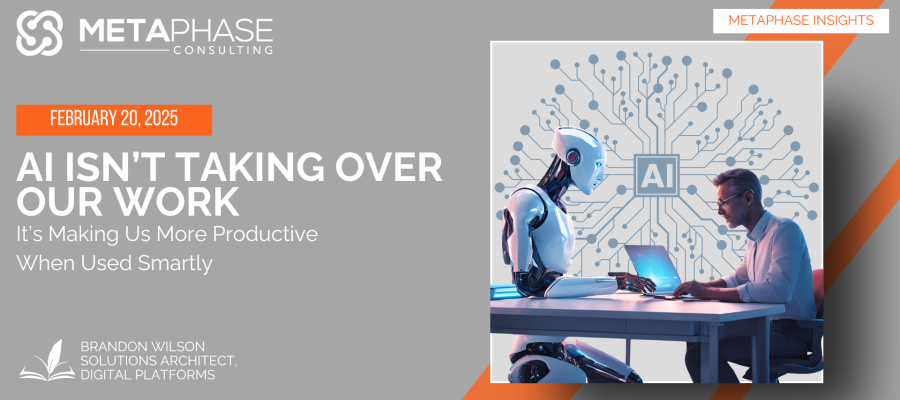
Artificial Intelligence (AI) is often painted as a job-stealing force that threatens to replace human workers. While automation has undoubtedly changed the way businesses operate, the reality is that AI isn’t taking over our jobs—it’s enhancing them. When used strategically, AI allows us to work smarter, automate repetitive tasks, and focus on higher-value activities that require human intuition and creativity.
AI as a Productivity Booster, Not a Job Killer
Instead of replacing human workers, AI is becoming a powerful tool for increasing productivity. It helps professionals across industries automate tedious tasks, analyze large datasets, and make better decisions faster. The key is to integrate AI efficiently into workflows rather than fear it as a replacement.
Automating Repetitive Tasks
One of the most immediate benefits of AI is automation. Repetitive, time-consuming tasks that once took hours can now be completed in minutes.
- Customer Support – AI-powered chatbots handle simple inquiries such as account balances, tracking orders, or resetting passwords. Instead of replacing human agents, these bots free them up to handle more complex customer issues that require empathy and problem-solving skills.
- Software Development – AI-powered tools like GitHub Copilot assist developers by suggesting code snippets, reducing debugging time, and making programming more efficient. This allows engineers to focus on solving core business problems rather than struggling with syntax errors.
Enhancing Decision-Making with AI Insights
AI doesn’t replace human decision-making—it enhances it by providing better insights.
- Healthcare – AI-driven diagnostics assist doctors by analyzing X-rays, MRIs, and patient data to detect diseases faster and with higher accuracy. Doctors still make the final call, but AI helps them do it with more confidence and efficiency.
- Finance – AI models help financial analysts detect fraudulent transactions, assess credit risks, and predict market trends. Instead of replacing analysts, AI enables them to focus on strategic financial decisions rather than spending hours crunching numbers manually.
Improving Creativity and Innovation
AI isn’t just for automating repetitive tasks; it’s also transforming creative industries.
- Marketing & Content Creation – AI-powered tools like ChatGPT and Jasper help marketers generate ideas, draft content, and refine messaging. Instead of replacing writers, AI assists them in brainstorming and optimizing their work, enabling them to create more engaging content in less time.
- Design & Art – AI-powered design tools like Adobe Sensei or DALL·E help graphic designers automate repetitive edits, generate ideas, and experiment with new styles. Designers still have full creative control, but AI enhances their workflow.
The Smart & Efficient Use of AI Matters
The true power of AI isn’t in replacing humans—it’s in empowering them. However, using AI smartly is key to maximizing its benefits. Here’s how professionals and businesses can ensure AI works for them:
- Identify Tasks to Automate – Use AI to eliminate repetitive and time-consuming work, allowing you to focus on strategy, creativity, and innovation.
- Leverage AI as an Assistant, Not a Replacement – AI should augment human expertise, not replace it. Use it to analyze data, generate insights, and assist with tasks, but keep humans in the loop for decision-making.
- Train Employees to Work Alongside AI – AI is a tool, and like any tool, its effectiveness depends on the user. Training employees to understand and integrate AI into their workflows ensures they use it efficiently rather than fear it.
- Be Selective with AI Tools – Not every AI tool is right for every business. Selecting AI solutions that align with your goals and workflows ensures productivity gains rather than unnecessary complexity.
AI isn’t here to take our jobs—it’s here to help us work smarter. The most successful professionals and businesses are those that embrace AI as a productivity booster rather than resist it out of fear. By automating mundane tasks, enhancing decision-making, and amplifying creativity, AI allows us to focus on what humans do best—solving problems, thinking critically, and innovating.
When used wisely, AI isn’t a job threat; it’s the key to a more productive, efficient, and fulfilling work environment. The future of work isn’t AI versus humans—it’s AI and humans working together to achieve more.

